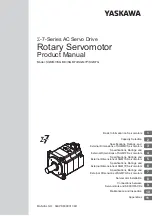
Timpdon Electronics
Tel
0161 - 980 7804
Issue 1 – April 2014
Web
www.timpdon.co.uk
Page 1
Introduction
All RC Servos include a bi-directional speed controlled motor, driving an output shaft via a high
reduction gearbox.
Coupled to the output shaft is a feedback potentiometer, measuring the position of the shaft,
which is used within the servo to control the motor speed and direction, such that the position
of the potentiometer, and hence the shaft, always matches a reference position determined by
the joystick setting of the transmitter channel in use.
If the coupling between the output shaft and potentiometer is removed, the motor will
attempt to rotate continuously either clockwise or anti-clockwise depending on whether the
transmitter joystick setting is greater or less than the fixed position of the uncoupled
potentiometer.
If the transmitter setting is equal to the position of the potentiometer, the motor will stop.
On most servos, there are mechanical end stops which prevent the output shaft from rotating
more than approximately 180 degrees, but these can easily be removed, permitting continuous
rotation of the shaft and, in conjunction with a centre neutral transmitter joystick channel, bi-
direction speed control of the servo as a motor gearbox.
The resulting maximum rotation speed of the output shaft can be easily determined from the
published maximum rotation rate of the servo. For example, if the servo is quoted with a slew
time of 0.2 seconds for 60 degrees rotation, this corresponds to 1.2 seconds per revolution, or
50 rev/min, maximum.
This speed is almost ideal for direct drive of anchor and similar winches.
Conversion Procedure
This conversion procedure involves mechanical modifications only. All of the original electronic
control circuits are retained, and used to provide bi-directional motor power in the converted
version.
The description below uses an ACOMS AS17 servo, but most standard servos will be similar in
construction.
Please note, however, that you embark on these modifications at your own risk. No warranty is
given that this procedure will work on all servos. Also some dexterity is required. Do not
attempt this modification unless you are confident in your ability to achieve success.
Also, carefully read and understand
all
of the procedures outlined below
before
starting.
Timpdon
Electronics
Technical Note - No. 16
How to Convert a Standard RC Servo
to a Bi-directional RC Controlled
Low Speed Motor Gearbox






















